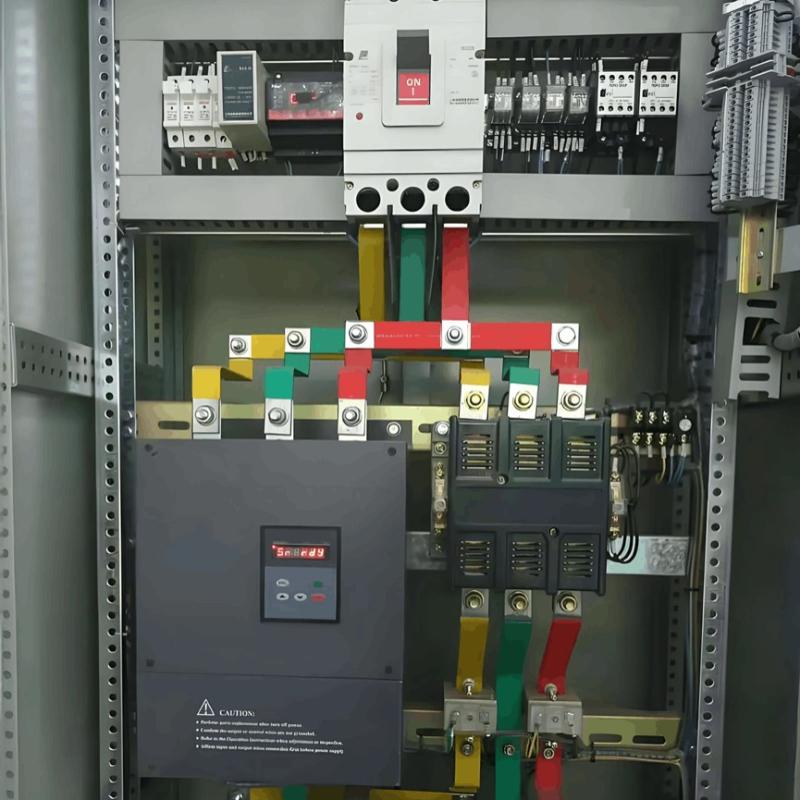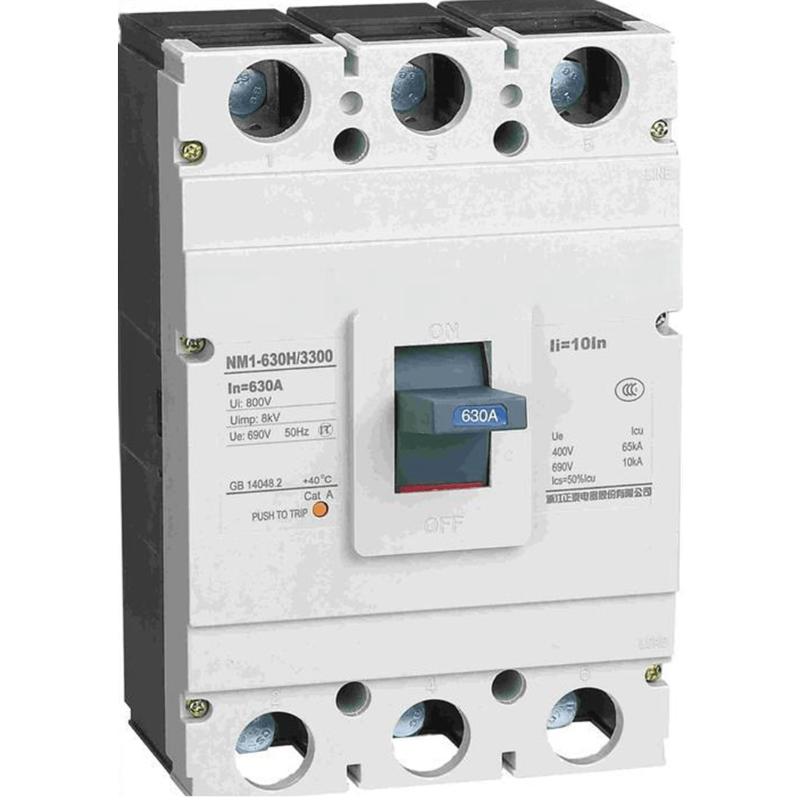IEEE Std C37.20.9™ defines the design, testing, and installation requirements for metal-enclosed gas-insulated switchgear (MEGIS) using gas at pressures above ambient as the primary insulation medium for alternating current systems rated from 1 kV to 52 kV. This includes, but is not limited to, circuit breakers, switches, bushings, busbars, instrument transformers, cable terminations, meters, and control/protection relays. In these switchgear assemblies, vertical compartments—some or all of the medium-voltage sections—are insulated primarily by pressurized gas. The standard applies to both indoor and outdoor installations.
Historically, the dominant type of switchgear in the U.S. market has been air-insulated, metal-clad switchgear. For ring-main distribution applications, American-style pad-mounted transformers have been commonly used, wherein high-voltage components such as load switches and high-voltage fuses are housed together with the transformer core and windings inside a tank filled with high-fire-point oil, or alternatively, air-insulated load switches are employed. Consequently, the adoption of gas-insulated switchgear in the U.S. occurred relatively late.
With the introduction of gas-insulated switchgear from European manufacturers such as ABB and Schneider Electric into the U.S. market, customers began to accept and adopt this technology. As a result, the IEEE standard for gas-insulated switchgear was developed later and was officially published only in 2019. This standard is largely based on IEC standards but has been modified regarding parameters, construction, and testing requirements to align with IEEE C37.20.2 and other relevant IEEE standards, particularly to meet IEEE’s safety requirements for equipment.
1.Environmental Conditions for Use
a) Operating temperature: maximum +40 °C; average over 24 hours not exceeding +35 °C; minimum –5 °C.
b) Altitude: not exceeding 3,300 feet (1,000 meters).
c) Enclosure protection rating: NEMA 250 Type 1 (IP20) for indoor use; Type 3R (IP24) for outdoor use.
According to GB/T 11022, indoor switchgear in China is classified into three minimum ambient temperature categories: –5 °C, –15 °C, and –25 °C. The minimum operating temperature specified in IEEE C37.20.9 for gas-insulated switchgear (–5 °C) is higher than that specified in IEEE C37.20.2 for air-insulated switchgear (–30 °C). Therefore, gas-insulated switchgear compliant with Chinese standards can fully satisfy the environmental requirements of IEEE C37.20.9.
Table 1 below shows the IEEE C37.20.9 requirements for rated voltage, power-frequency withstand voltage, and lightning impulse withstand voltage for gas-insulated switchgear.
Table 1 – Insulation Voltage Ratings for Gas-Insulated Switchgear per IEEE C37.20.9
| Application Area in North China |
Switchgear Rated Voltage (kV) |
Rated Power Frequency Withstand Voltage (kV, Effective Value) |
Rated Impulse Withstand Voltage (kV, Peak Value) |
| With separable connector disconnector conforming to IEC 60664-1, EN 60664-1/CD1317 |
Without separable connector disconnector conforming to IEC 60217-5013, IEC 60217-5013 |
Conforming to IEC 60217-5013, IEC 60217-5013 (without separable connector disconnector) |
| 2.3/4.16 |
4.76 |
19 |
19 |
19 |
60 |
| 6/9 |
8.25 |
34 |
36 |
26
|
95 |
| 12.47/12.9 |
15 |
34 |
36 |
26 |
95 |
| 21/37 |
27 |
40 |
50 |
60 |
125 |
| 34.5 |
38 |
50 |
70 |
60 |
150 |
Switchgear voltage ratings in North American standards differ from those in China. Therefore, gas-insulated switchgear (GIS) must comply with the rated power-frequency withstand voltage and rated lightning impulse withstand voltage requirements specified in IEEE standards. For example, a 12 kV GIS cabinet designed according to Chinese standards can only meet the dielectric test requirements for the 4.76 kV voltage class under U.S. standards, while a 24 kV Chinese GIS cabinet can satisfy insulation requirements for voltage classes up to and including 27 kV.
IEEE Std 386™-2016 specifies requirements for separable insulated connectors used in distribution systems rated from 2.5 kV to 35 kV—commonly known as the "American-style elbow connector" standard. These connectors are widely used in U.S.-standard equipment such as pad-mounted transformers and cable distribution boxes. In contrast, Chinese gas-insulated switchgear typically employs cable bushings and plugs conforming to EN 50181. The IEEE standard for gas-insulated switchgear includes specific dielectric test requirements for various types of cable termination accessories.
2 Rated Current
Recommended values for the rated continuous current of main busbars in IEEE gas-insulated switchgear (MEGIS) are 200 A, 600 A, 1200 A, 2000 A, 2500 A, 3000 A, and 4000 A—differing from common Chinese ratings such as 630 A, 1250 A, and 3150 A.
3 Rated Frequency
The IEEE standard specifies a rated frequency of 60 Hz, whereas the standard frequency in China is 50 Hz. The higher frequency of 60 Hz has a significant impact on temperature rise and short-circuit breaking performance. According to GB/T 11022, for switchgear and controlgear rated at either 50 Hz or 60 Hz—provided there are no ferromagnetic components near current-carrying parts—if the measured temperature rise during a continuous current test at 50 Hz does not exceed 95% of the maximum allowable limit, the equipment is considered compliant for both frequencies, i.e., it also meets the 60 Hz temperature rise requirement.
However, due to limited heat dissipation in gas-insulated switchgear and its relatively small thermal margin, design improvements are often necessary to satisfy 60 Hz requirements. Products that have passed the 1.1× rated current temperature rise test under Chinese standards can generally meet the 60 Hz requirement.
4 Rated Short-Time Withstand Current and Rated Peak Withstand Current
The recommended short-time withstand current values for IEEE gas-insulated switchgear are shown in Table 3. Unlike Chinese standards, which specify a short-circuit duration of 3 s or 4 s, the IEEE standard defines a short-circuit duration of 2 seconds.
Furthermore, because the IEEE system operates at 60 Hz (as opposed to 50 Hz), the rated peak withstand current is defined as 2.6 times the rated short-time withstand current. For example, a rated short-time withstand current of 31.5 kA corresponds to a rated peak withstand current of 82 kA—slightly higher than the typical 80 kA used in China. To withstand the electrodynamic forces generated by such peak short-circuit currents, contact pressure and mechanical strength of components such as contacts must be enhanced.
Table 2 – Recommended Short-Time Withstand Current Ratings for IEEE Gas-Insulated Switchgear
| Item |
Rated
|
|
| Rated Short-Circuit Withstand Current kA (Effective Value, for Copper and Aluminum Materials) with Heat-Resistant Encapsulating Material for 2 Seconds |
Rated Short-Circuit Peak Withstand Current kA |
Instantaneous Current kA (Effective Value, Asymmetric) |
1
|
12.5 |
32.5 |
19.4 |
| 2 |
16.0 |
42.0 |
24.8 |
| 3 |
20.0 |
52.0 |
31.0 |
| 4 |
25.0 |
65.0 |
38.8 |
| 5 |
31.5 |
82.0 |
48.8 |
| 6 |
40.0 |
104.0 |
61.0 |
| 7 |
50.0 |
130.0 |
77.5 |
| 8 |
63.0 |
164.0 |
97.7 |






















